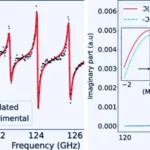Researchers at the University of Washington have achieved a groundbreaking milestone by creating minuscule robotic devices known as “microfliers” that can dramatically alter their flight path mid-air using a folding technique inspired by the ancient art of origami. These innovative devices, weighing just 400 milligrams, can change their aerial trajectory during descent, thanks to a Miura-ori origami fold. This transformative capability opens up a world of possibilities for aerial mobility, offering applications in surveillance, environmental monitoring, and beyond.
Unprecedented Control with Origami and Solar Power
The microfliers rely on an onboard battery-free actuator, a solar power-harvesting circuit, and a controller to execute mid-air shape changes. By mimicking the graceful descent of various leaf types, these devices can transition from chaotic tumbling to stable falling, making their descent highly energy-efficient. This groundbreaking technology also permits researchers to gather real-time data as microfliers can be equipped with onboard sensors to monitor temperature, humidity, and other environmental conditions.
Overcoming Design Challenges for Enhanced Mobility
These origami-inspired microfliers have conquered significant design challenges. They are engineered to remain stiff enough to prevent inadvertent folding and only require approximately 25 milliseconds to initiate the folding process. Additionally, these devices can undergo shape changes untethered from a power source, as their power-harvesting circuit harnesses solar energy to provide the necessary power for mid-air transitions.
A Promising Future for Precision Landings
The current microfliers can transition from a tumbling state to a falling state. It allows researchers to control the descent of multiple microfliers simultaneously, ensuring they disperse in different directions as they descend. The research team envisions future microfliers that can transition in both directions, offering even more precise control over their flight path, particularly in turbulent wind conditions; this added functionality promises to expand the scope of applications for these origami-inspired aerial devices.
This remarkable achievement in aerial robotics was made possible through the combined efforts of researchers at the University of Washington. Various fellowships and programs, including the Moore Foundation, National Science Foundation, and Google fellowship programs, supported it. The potential applications for this technology are far-reaching, with implications for fields such as environmental monitoring, disaster response, and beyond.










